Review: JLab Party Series Bluetooth Speakers
Feb 3, 2017, 3:01 PM by Eric M. Zeman
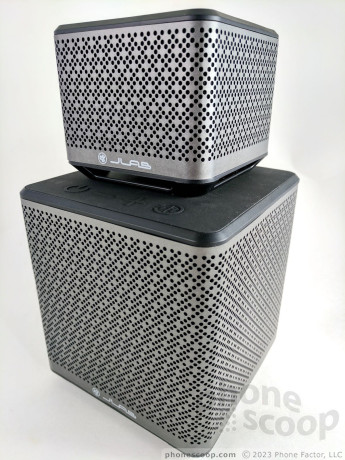
JLab's latest set of Bluetooth speakers is all about partying. The Party Series comes in two sizes, fittingly named House Party and Block Party. These square-shaped speakers include multiple drivers, subwoofers, and the ability to connect with one another for a more immersive listening experience. Here is Phonescoop's in-depth repot.
Intro
JLab is ready to help you get your house party rockin'. The company is back with two new Bluetooth speakers, called the Party Series, that can work together to fill your house or yard with tunes. If you value sound, simplicity, and savings, the JLab Party Series impresses in more ways than one. Here is Phone Scoop's in-depth report.
Background
Bluetooth speakers face two general limitations. First, they struggle to produce what I call true stereo sound. Many speakers have two drivers, sure, but because the drivers are often contained in the same unit — sometimes only an inch or two apart — the separation of the left and right signals is lost on the listener. Moreover, a significant number of Bluetooth speakers put both drivers on the same side of the box. This further limits on how they spread sound around rooms and other spaces.
Second, Bluetooth speakers generally prefer to work alone. With a few exceptions, what you purchase off the shelf at your local store can only connect to a single phone and vice versa.
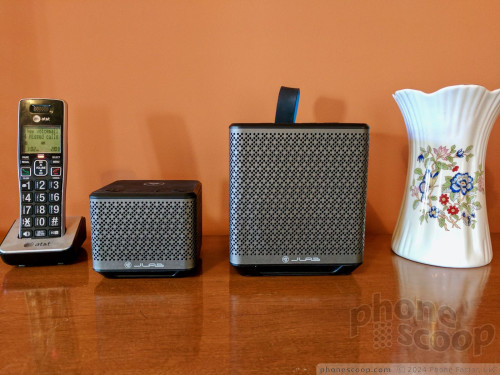
The Party Series from JLab seeks to rectify both these issues to improve the music-listening experience. First, the Party Series feature drivers on opposite sides of the enclosures, in addition to bass ports, which helps create a more discernible stereo effect. The result is sound that is spread around in a more immersive way. Some speaker makers, such as JBL and Ultimate Ears, allow you to link two of their individual speakers together through a mobile app to create a good stereo effect. JLab has taken that approach with the Party Series, too.
With drivers on both sides of the speaker and the ability to link with up to eight other Party Series devices, JLab claims its newest speakers deliver a 3D listening experience unlike the competition. That's a bold claim. Can JLab deliver?
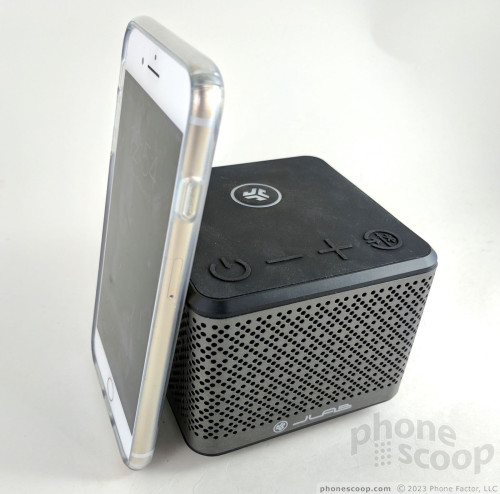
Hardware
The Party Series comes in two variants: House Party and Block Party. The design, shape, and features are mostly identical, though the House is smaller than the Block. The enclosures are near perfect squares with gray/black design. Three of the four side panels are covered in a perforated metal sheet that wraps around. It feels tough. A hardened rubber material forms the top surface, which is also where the buttons and controls are located. The back and bottom surfaces are formed by sturdy plastic. The Party Series are incredibly sturdy, but they aren't “rugged”.
Neither the House nor the Block travels particularly well. Where the House Party speaker measures a reasonable 4 by 3.5 by 4 inches, the Block Party is much bigger at 5.5 by 6 by 5.5 inches. Those numbers may not seem all that different, but the House Party consumes 56 cubic inches of space while the Block Party eats up 182 cubic inches. It's big. The House Party weighs 1.7 pounds and the Block Party weighs 5.6 pounds. They'll seem compact enough in your home, but absolutely massive in a backpack. No, these are going to stay in your house most of the time, with perhaps the odd weekend afternoon on your outdoor deck or in your backyard.
The controls work really well. Along the front edge, you have four buttons: power, volume down, volume up, and Bluetooth pairing. The raised shapes are easy to tell apart and I like the buttons' soft-yet-firm action. A large, illuminated JLab button is also on top. It's sole use is for pairing with other JLab speakers.
I truly love that JLab printed all the pairing instructions on the bottom of the chassis. No need to fumble through the user manual; simply turn the speaker over to see what's what.
On the House, the ports are placed nearer the top edge and are covered by a soft rubber flap. The House includes only a microUSB port for charging the speaker and a 3.5mm audio jack for plugging your phone directly into the speaker. There's no power-out USB port, which means you can't use the House to charge your phone.
The Block Party has a large leather handle on the rear to assist in carrying it around and it pushes all the ports — also covered by a soft rubber flap — to the bottom of the chassis. The Block Party includes a real charger and a proprietary power-input jack, which means you'd better not lose the charger. It cannot charge via USB, but it includes a USB-A port so you can plug in your Android phone or iPhone. There's also a 3.5mm audio input jack.
JLab says the Party Series are rated IPX4 against water. That means they can handle being splashed lightly, but don't bring either into the shower or let them sit out in the rain. Definitely don't drop the Party Series speakers into your pool.
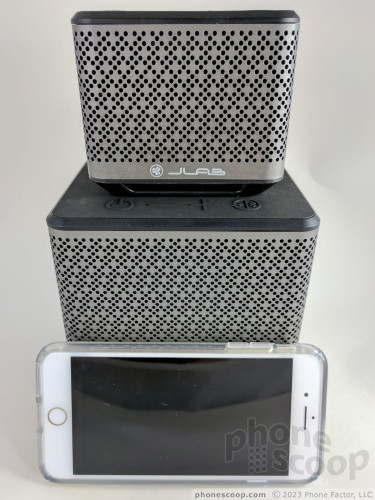
Performance
JLab stuck with a basic Bluetooth 4.0 class 2 radio for both speakers, which is limited to a range of 30 feet. That means your phone has to be relatively close to the speaker in order for it to stream music wirelessly. Some speakers in this category support Bluetooth connections up to 100 feet, and that's what I expected from the Party Series. Shame.
The pairing process is quick and simple. Just follow the directions printed on the bottom of the speaker. I was able to connect both a Pixel XL and an iPhone 7 Plus to the Party Series in under a minute. Once connected, I didn't run into any problems with dropped audio unless I strayed beyond the 30-foot range.
Significant differences lurk under the chassis' of the House Party and Block Party.
The House has two 2.0-inch, full-range drivers and two 2.0-inch passive subwoofers. Each driver is rated at 10 watts for a total of 20 watts.
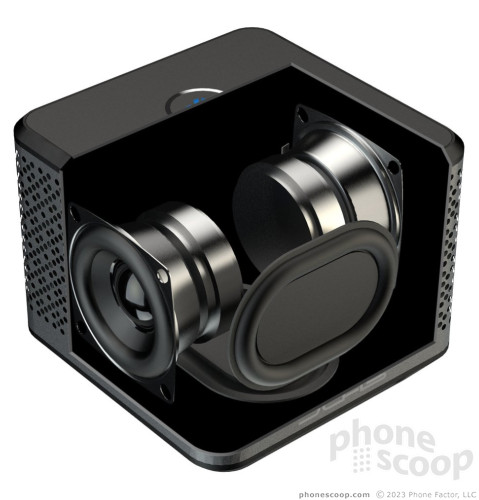
The Block has two 3.0-inch main drivers, two 1.0-inch tweeters, and two 3.0-inch passive subwoofers. The total power output of the Block is 50 watts. The share the same frequency range, which is 85 Hz to 20,000 KHz.
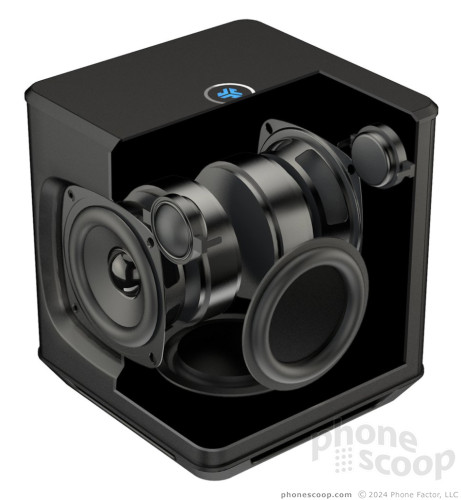
The smaller House Party pumps out an incredible amount of sound. The speaker easily filled a room with music and, when cranked up, pushed enough air to fill the entire first floor of my house (~900 square feet). I could hear the House throughout my house. More importantly, the music sounds really, really good. I was genuinely surprised by the punch of the bass and the clarity of the higher frequencies. I tested the speaker with several phones and music services, cycling through some metal, rock, acoustic, EDM, and classical music. The House handled all genres well, but really shined with bass-heavy stuff like metal and EDM. The House was a thumpin'.
The Block Party is well named. I put it on the front stoop of my house, cranked it up, and walked down the street. I was easily able to hear the music at the far end of my street, about 200 feet away. It delivers a skull-crushing amount of volume. Seriously, it is the loudest Bluetooth speaker I've ever tested. Like the House, JLab tuned the Block well for party-friendly dance music. The bass is simply eye-popping and eardrum-slapping. The big drivers, big woofers, and dedicated tweeters give the Block Party excellent sonic range. You need only one of these to fill an entire house or yard with sound, let alone your block.
One note: it's best to place the speakers on a hard surface, rather than something soft like a couch, bed, or even carpet. Soft surfaces eat up the bass. Your best bet is a countertop or larger table of some sort, which gives the downward-firing subwoofer something to push against.
The JLab House Party and Block Party can work together to extend your music all over the place, sort of the way Sonos does. You don't need an app; just press the JLab button on top to put one of the speakers into receiving mode. Do the same on the other and the two will start talking to one another and eventually connect.
The speakers do not talk to one another via Bluetooth. Instead, they are using their own WiFi in the 5.8 GHz band. The speakers can broadcast to one another as far as 100 feet. Moreover, you can connect up to eight Party Series speakers and put one in each room of your home for the ultimate House Party. I didn't run into any trouble pairing the speakers together, and they easily remain in sync across the stated 100-foot range. For example, I kept one speaker on my deck and put the other at the far back of my property. I also tested them indoors. I left one in my basement and brought the other to my office on the second floor. No problems. This “Cast-Connect” tech worked flawlessly in my tests. Keep in mind, however, that your phone needs to stay within 30 feet of the “main” speaker.
Battery life is very good. Both speakers are rated for up to 9 hours of playback. The House Party has a 4,400 mAh battery and the Block Party has a 6,600 mAh battery. If you keep the volume set at about 50% you'll easily reach 9.25 or 9.5 hours. Playing the speakers at full volume will drain them in a little more than 8 hours. The Block Party can charge a smartphone while running, but doing so will sap the speaker's battery life a bit.
One complaint: The speakers don't provide any sort of visual feedback when charging. The JLab button lights up briefly when you first plug the speakers in, but there's no orange light to let you know the speaker is charging, nor is there a green light to let you know the speaker is fully charged. The only way to check is via the Bluetooth menu of your smartphone. Finally, JLab doesn't provide any guidance on how long it takes to fully charge each speaker. It's several hours, at the very least.
Discussion
I dig what JLab is doing with the Party Series speakers. By themselves, the House Party and Block Party look good, are easy to use, and push out some seriously good-sounding music. The way JLab engineered the drivers lets the speakers spread sound in a way that easily fills a room or backyard. I really like how the speakers connect to one another, allowing you to put your music in more places.
At $99, the House Party is a bargain. I've tested speakers that cost twice as much that don't sound half as good. The Block Party is only a bit more at $150. For that price, you get a speaker that's loud enough to annoy everyone on your street — and sound awesome doing it.
JLab has a pair of winners here. While the Party Series aren't rugged or waterproof, they do what many other cheap speakers don't: they party hard.
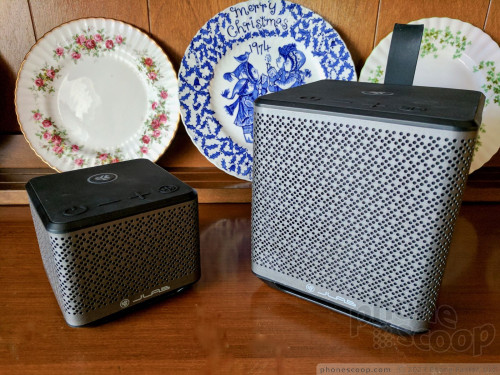
Comments
No messages


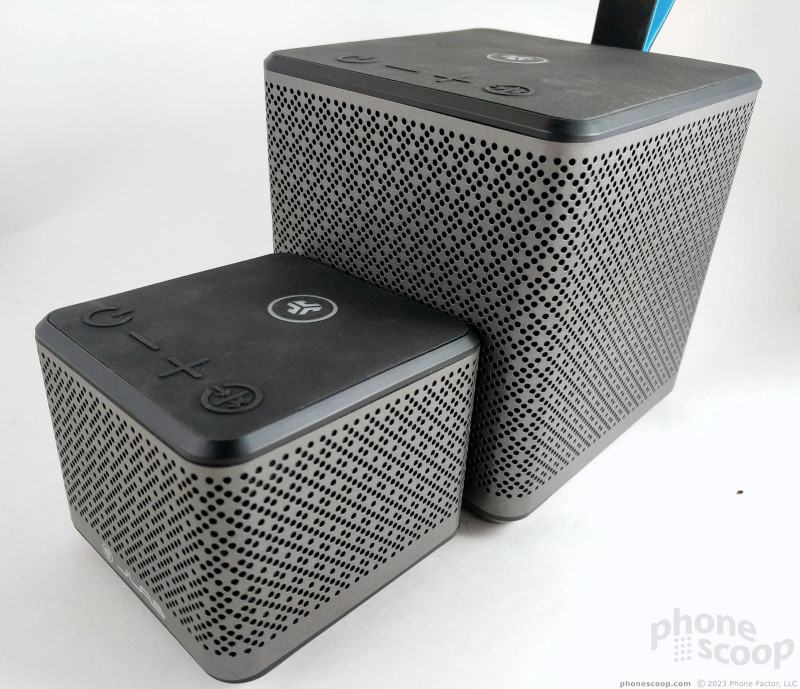





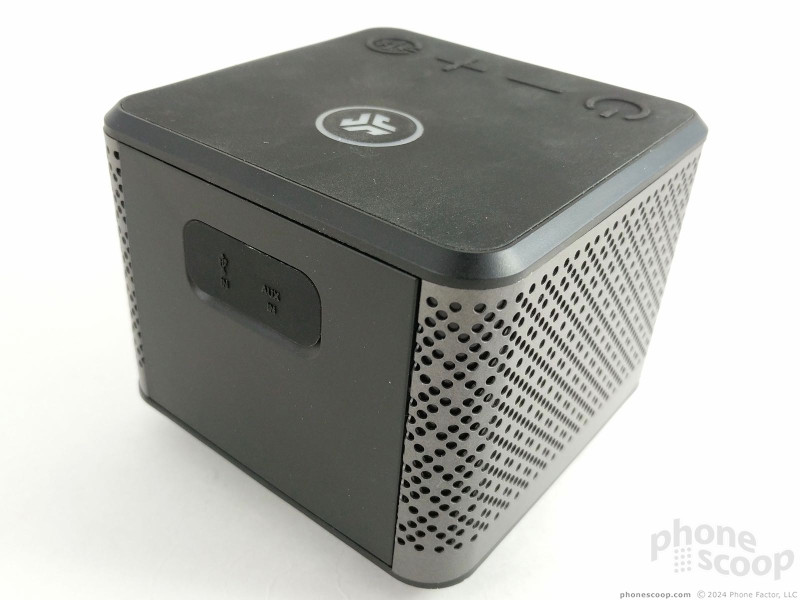







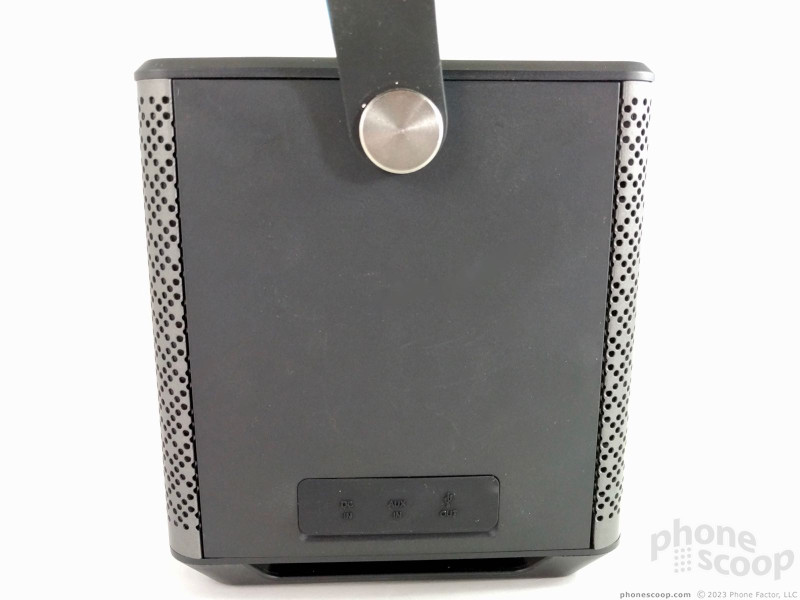







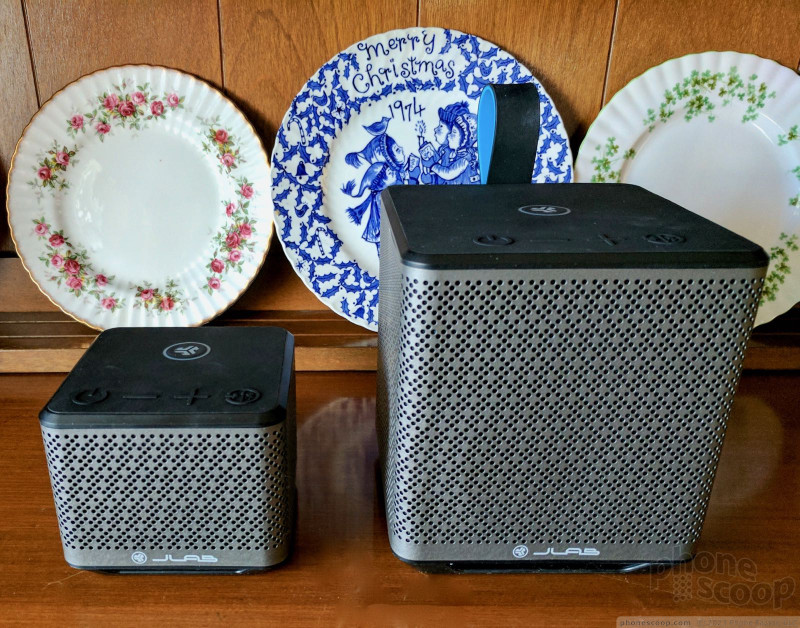







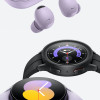 Samsung Upgrades its Wearables
Samsung Upgrades its Wearables
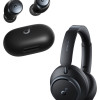 SoundCore Debuts new Space Series
SoundCore Debuts new Space Series
 iPhone 14 Plus Offers a Big Screen For Less
iPhone 14 Plus Offers a Big Screen For Less
 iPhone 15 Series Goes All-In on USB-C and Dynamic Island
iPhone 15 Series Goes All-In on USB-C and Dynamic Island
 Samsung S24 Series Adds More AI, Updates the Hardware
Samsung S24 Series Adds More AI, Updates the Hardware

